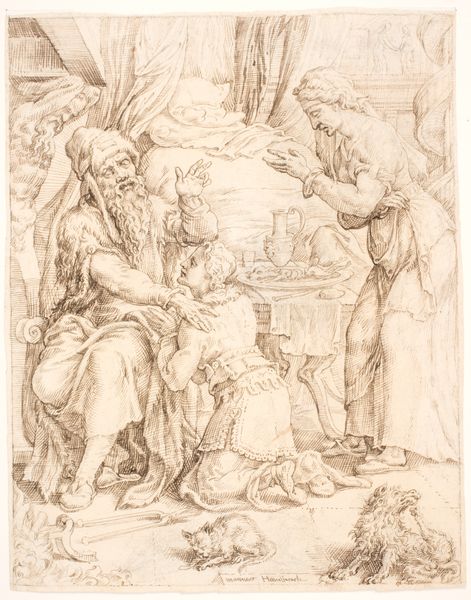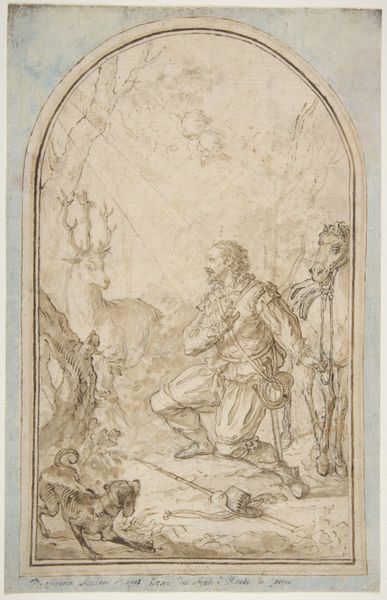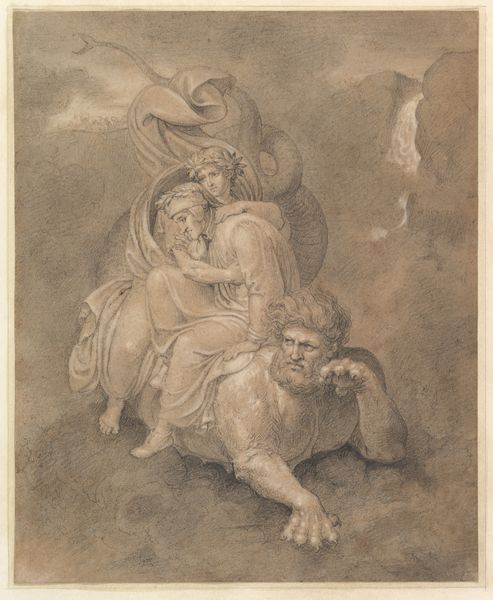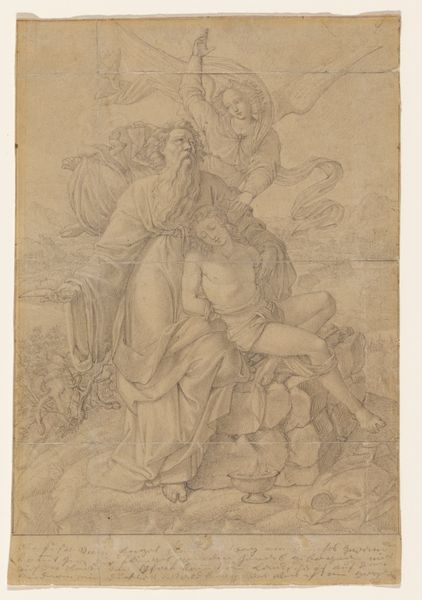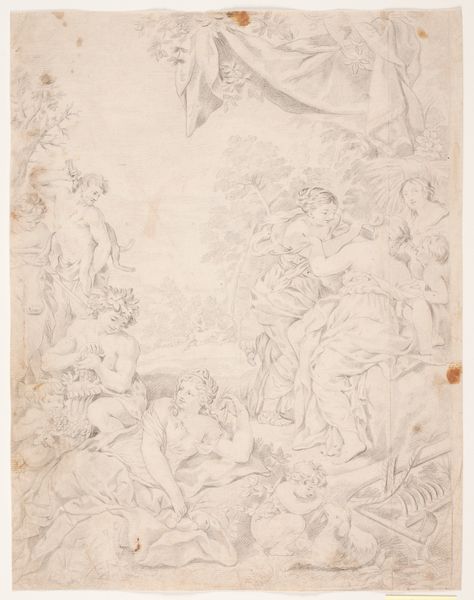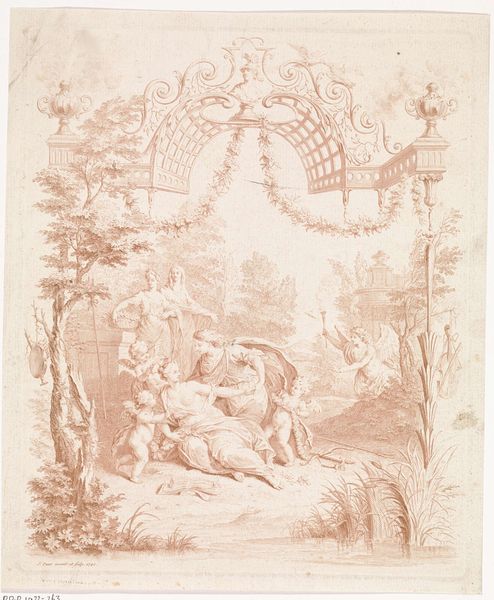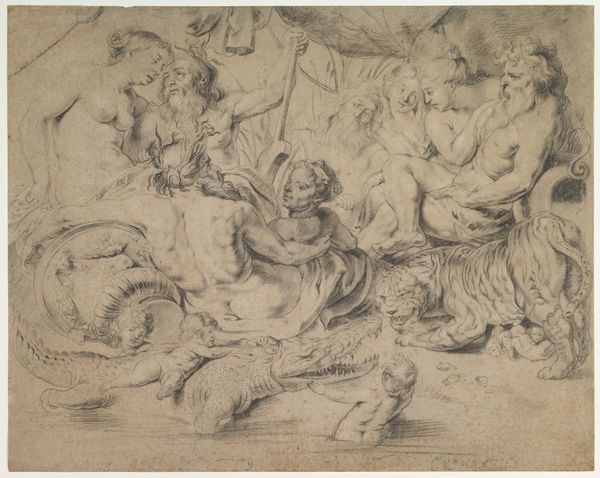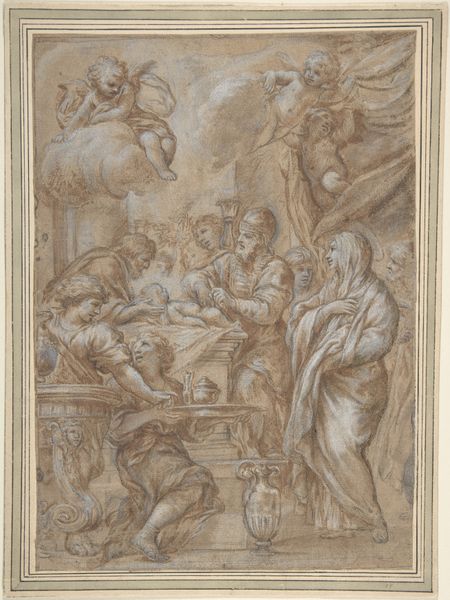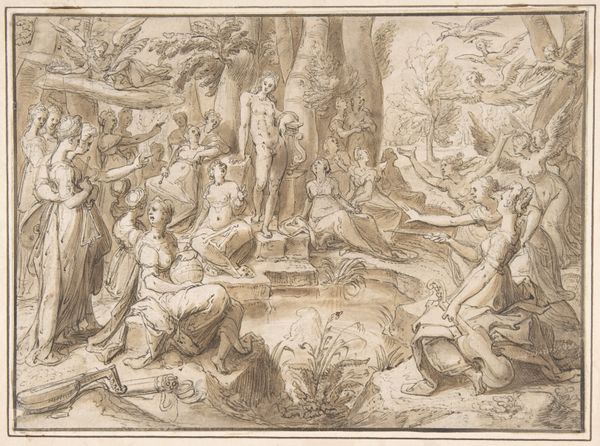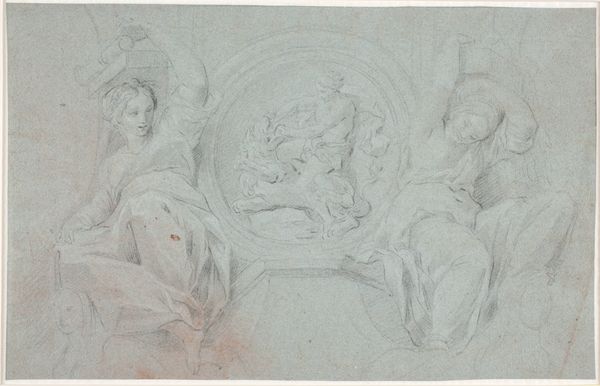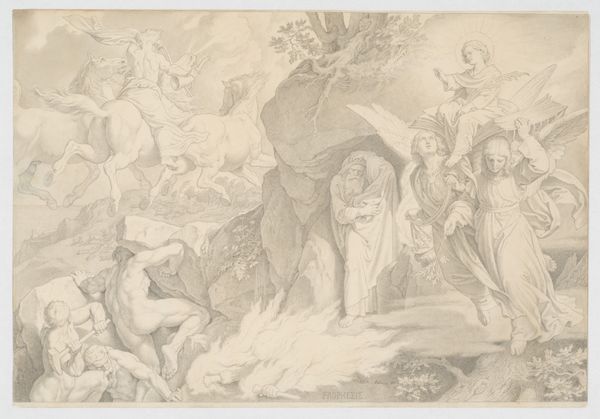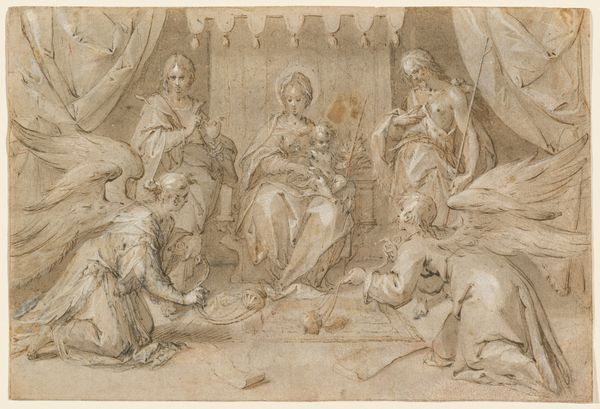
drawing, pencil, charcoal
#
drawing
#
landscape
#
charcoal drawing
#
figuration
#
11_renaissance
#
pencil drawing
#
pencil
#
portrait drawing
#
charcoal
#
history-painting
#
italian-renaissance
Dimensions: Sheet: 6 1/4 x 9 1/8 in. (15.9 x 23.1 cm)
Copyright: Public Domain
Editor: This drawing, "Jupiter and Astraea," is by Giulio Campi, made sometime between 1540 and 1555, rendered in charcoal and pencil. It strikes me as quite…serene, almost dreamlike. What are your thoughts on how the context of its creation affects its reception? Curator: Considering its place within the Italian Renaissance, and given that these figures represent classical deities, it is interesting to note that its serenity is atypical. Works depicting these figures often were leveraged as symbolic devices for political narratives. Do you see any evidence of propaganda or didactic intentions? Editor: Not overtly, no. It feels more... personal. Perhaps the aim was less about public messaging and more about the artist's exploration of classical ideals? Curator: That's an interesting thought. It challenges the established historical understanding. The idealized figures, particularly Astraea, often stood as allegories for justice or good governance within Renaissance political discourse. The very act of depicting classical subjects placed the artist and patron within a lineage of cultural power. This connects directly to the public role art served during that era. Editor: So even if the drawing seems intimate, its subject matter automatically infuses it with political and social implications? It's about *who* is depicted just as much as how? Curator: Precisely. Campi’s decision to portray Jupiter and Astraea links the artwork to prevailing humanist ideals and notions of divine right, or perhaps critiques of those ideals. The artistic choices always reflect – consciously or not – socio-political climates. Editor: I hadn’t considered that an artist might even critique those ideals, through similar-looking works. Thank you! Curator: The politics of imagery is quite fascinating, isn't it? It forces us to look beyond the aesthetic and engage with the historical power dynamics embedded in art.
Comments
No comments
Be the first to comment and join the conversation on the ultimate creative platform.
